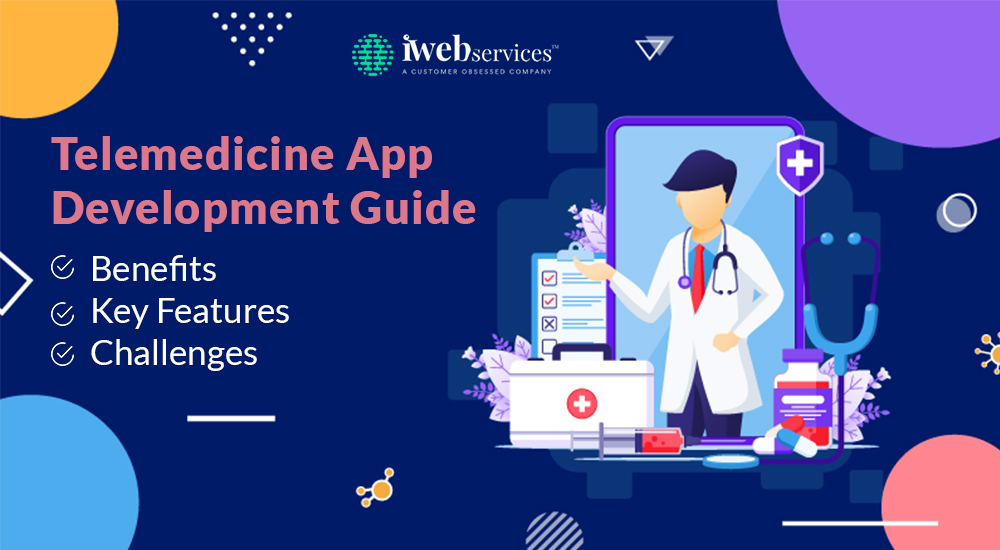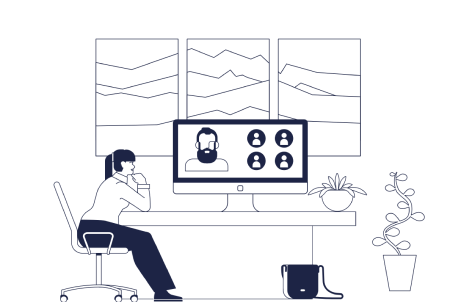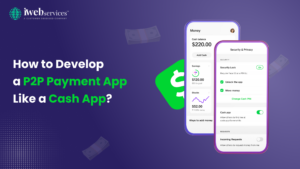Introduction
Telehealth mobile application development services put healthcare providers and patients together in a digital setting, improving access to treatment. It allows patients to communicate with doctors from everywhere and at any time.
Physicians, on the other hand, will assess, prescribe, and treat patients with a variety of appointment forms, including follow-up routines and appointments.
The average wait time for a patient to communicate with a doctor and a telehealth application is three minutes. As a result, patients are no longer required to wait in lines for hours to see a specialist.
The dramatic increase in the number of patients using telemedicine apps has expanded the demand for such applications. It is one of the primary reasons that many technology firms are now exploring telemedicine app development and hiring a mobile app developer.
Telemedicine app development has started to alter the face of the healthcare sector, demonstrating that our healthcare infrastructure is in desperate need of creative technologies. The COVID-19 pandemic has thrown the healthcare system on its head.
Telemedicine technological creation is becoming the prime target of healthcare providers who want to offer remote healthcare facilities to patients. Statista forecast that the telemedicine industry will grow to $41.2 billion by 2021 before the pandemic.
Since this gap is still unoccupied, now is the right time to invest in telehealth app growth because demand for such services is increasing and will continue to grow.
Telemedicine Apps Benefits
There are many benefits of using and developing healthcare software specifically, a telemedicine app for both physicians and patients. The below are some of the benefits:
| User | Benefit | Description |
|
For Patients
|
Quick solutions | These applications are very useful when a patient has a mild health condition, such as a cough or fever. |
| They will use their cell phone to contact a doctor to get the appropriate medication in a matter of minutes. | ||
| This saves time spent traveling to and waiting in the doctor’s office. | ||
| Better Convenience | The sole aim of the telehealth application is to provide patients with ease. | |
| You should not have to expend energy flying when sick. You may contact the doctor to get the appropriate medication. | ||
| You have the official papers right on the smartphone, which saves you from having to roam around the hospital to get it handled. | ||
| Easy availability of specialist | The hospital in your town or surrounding city does not have all types of professionals on staff. As a result, you might need to travel to a distant place to get medication for a specific illness. You can consult with any kind of expert you like using these applications. | |
| This is one of the main reasons that the implementation of a telehealth app begun in 2020. | ||
| Increased Satisfaction | One of the most significant benefits of using telemedicine systems is complete fulfillment. | |
| You will have a more productive chat with the doctor to remove all your doubts and uncertainties. | ||
| Most telemedicine applications are available 24/7. So, if you have a question, you can go to your account and have it answered. | ||
| For Doctors | Successful monitoring system | An appropriate surveillance mechanism should be used in telehealth implementations. |
| Such a program maintains a database of the patient’s entire medical history. As a result, it is an essential part of the production. | ||
| All past patient reports are available by date, making it easier for the doctor to follow up. | ||
| Extensive patient scope | Since physicians, mostly specialists, are not available in every part of the world, the application enables the doctor to travel to remote areas to serve patients. | |
| Improved Practice Performance | Since the product keeps a database of any aspect of the patient, it improves the doctor’s decision-making. | |
| Since the patient’s physical commutation is eliminated, the doctor can serve more patients. | ||
| Time saver | Since the software’s core procedure is automatic, the doctor will save time on basic past-related questions. | |
| At the start of the appointment, the app exchanges the details with the doctor. |
Key features of Telemedicine app: Patient’s perspective
- Registration- A patient may sign up with a telephone number, a social network, or an email address. Since the software deals with confidential data, it necessitates a higher degree of security. The use of two-factor authentication, which may include SMS, audio, and phone verification, is recommended.
- Patient profile- A patient must enter required healthcare documents and details. The operation is simple and short as nobody enjoys filling out lengthy forms.
- Searching criteria- A patient may use one or more requirements to find a medical expert (specialization, proximity, doctor rating, etc.). The general recommendation for the first app edition is to restrict search entities.
- Appointments- The patient should have access to a list of appointments depending on specialist availability, as well as the right to edit or postpone them.
- Communication facility- For real-time consulting, the procedure can be carried out through audio or video conferencing. It is best to use the easiest format for the first iteration of a telemedicine app (e.g., photo-based consultation for dermatologists).
- Location- The patient can contact practitioners who hold a valid license. The app can use Google Maps or related resources to determine its location.
- Payments and notifications- The integration of a payment portal framework allows for the monetization of telemedicine apps (e.g., Stripe, Braintree, PayPal). The patient should be able to see their transaction history as well. Push alerts and related notes also assist in keeping track of appointments.
- Secured chats– The one-to-one messenger is an excellent means of contact between a doctor and a customer. This function is simple to integrate and can be used in the first update of the software. It is important to note that developing a more sophisticated messenger with a multi-user chat system is more difficult; it requires a significant amount of effort and time, especially in the healthcare sector.
- Insurance plan– Integrating with health companies and adding patients’ plans is a valuable feature.
Key Features of Telemedicine app: Doctor’s perspective
- Doctor’s profile- Practitioners must have detailed facts about their specialty, expertise, qualifications, and so on. Patients may likely like to double-check their driver’s license and evidence of medical qualifications.
- Appointments and scheduling– The doctor should be able to set their availability, receive referral requests, and maintain an appointment calendar.
- Communication facility– The relationship between the patient and the doctor should be identical. It is preferable to use one-to-one messenger or photo consultation in the first product edition.
- Medical prescription- Doctors should digitally fill out their prescriptions. The patient may then obtain the prescription medicine from a pharmacy or other healthcare facility. This method is even more effective for people who have chronic illnesses who need to fill prescriptions regularly.
- Databases related to the pharmacy- The software will communicate with pharmacy stores to ensure that patients and physicians receive the medications they need on time.
- Recording of video or audio sessions- It allows you to store or download consultations. This file can be used to monitor the progress of the procedure and for precise referencing over time.
Challenges in Telemedicine App Development
- Implementation of UX/UI- The logic, interface, and architecture should be designed to meet the needs of the target customer. Please keep in mind that the user experience and user interface of a doctor app are not the same as the needs of a hospital app.
- Security concerns- Telemedicine apps should maintain the highest level of protection for healthcare information, including personal data. To store, share, and continue with this type of information, all appropriate measures must be taken. Ensure the use of multi-factor authentication or biometric verification during the production of telemedicine apps. It is possible to use high-end encryption protocols in the data exchange.
- Trust issues- There is still a lack of interest in telemedicine software. Proof of doctor honesty, a transparent review scheme, and well-planned marketing will both serve to pique the attention of prospective users.
- Infrastructure on the back end There is several public third-party systems that can be built into a telemedicine app in terms of features. It is critical to investigate their documentation and compatibility with the method from the start.
Conclusion
Telemedicine App Development necessitates a great deal of attention to detail. Aside from determining the functionality to be used in the software and the technology to be used, you must ensure that the product complies with the regulations in your target country or region. To make the telemedicine app trustworthy for your customers, you must provide accurate details about doctors and encourage patients to rate and compare doctors.
 May 11, 2021
May 11, 2021







